#John Ingham
Text
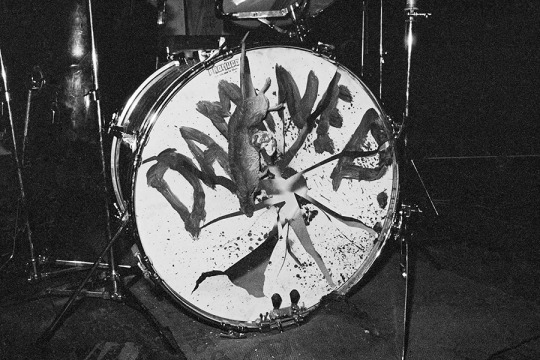


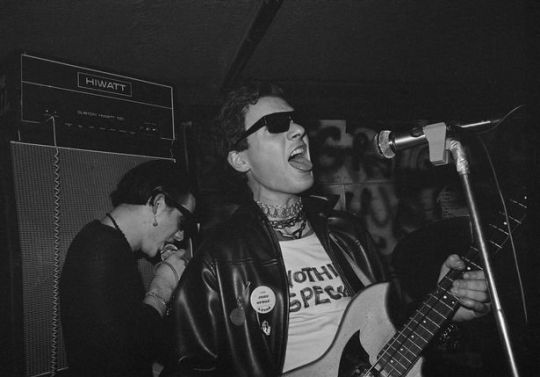

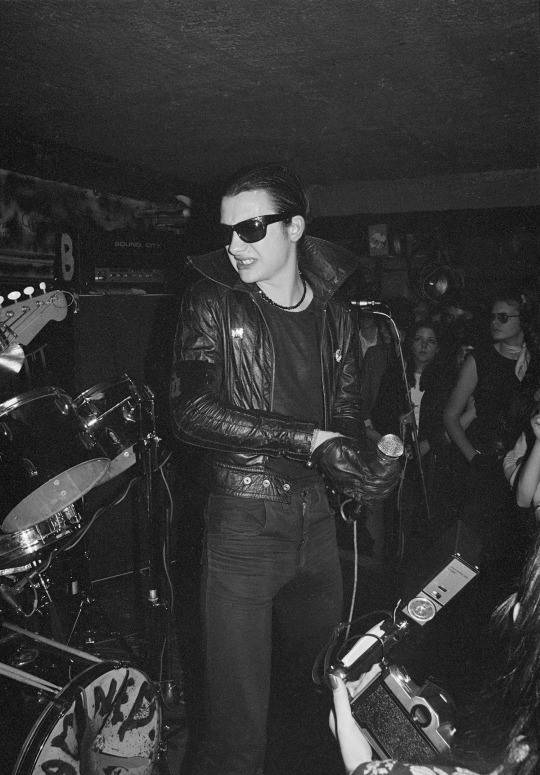
"...SO IT WAS A TIME OF MASSIVE CHANGE, NOT JUST FOR MUSIC, BUT FOR CREATIVITY OF ANY KIND..."
PIC(S) INFO: Spotlight on first wave UK punk band THE DAMNED opening the year 1977 (January 2nd) at the Hope & Anchor, a pub in Islington with a history of live bands. "Comfortably holding about 100 people, there were double that number crammed in. Sweat was running down the walls." 📸: John Ingham.
BIJU BELINKY: "...and '70s punk" seems to have become a buzzword associated with a vague way of dressing now."
DAVE VANIAN: "See – it never was that. It started from people realising that if you had enough passion and commitment, you could try your hand at almost anything. As a young person, the doors weren't barred to you like they were in [previous decades]. Before, Britain was still pretty much in a post-war mindset. It was still a very grey place, set in an old-fashioned imperial kind of system that didn't have much to say to young people who didn't want to follow the system. So it was a time of massive change, not just for music, but for creativity of any kind: writing, journalism, art… It was fun."
-- VICE/NOISEY, "Never Mind the Sex Pistols... It Was The Damned Who Pioneered UK Punk," c. November 1976
Source: www.vice.com/en/article/8gxkz3.
#THE DAMNED#THE DAMNED 1977#1970s#DAMNED#DAMNED 1977#1977 DAMNED#First Wave UK punk#Punk rock#UK punk#Dave Vanian#Captain Sensible#Islington#Islington UK#John Ingham#Punk photography#1977#Bass drum#Rat Scabies#Brian James#DAMNED band#THE DAMNED band#70s punk#Photography#Punk gigs#Drums#Super Seventies#Ray Burns#Damned Damned Damned#77 punk#1977 punk
15 notes
·
View notes
Text
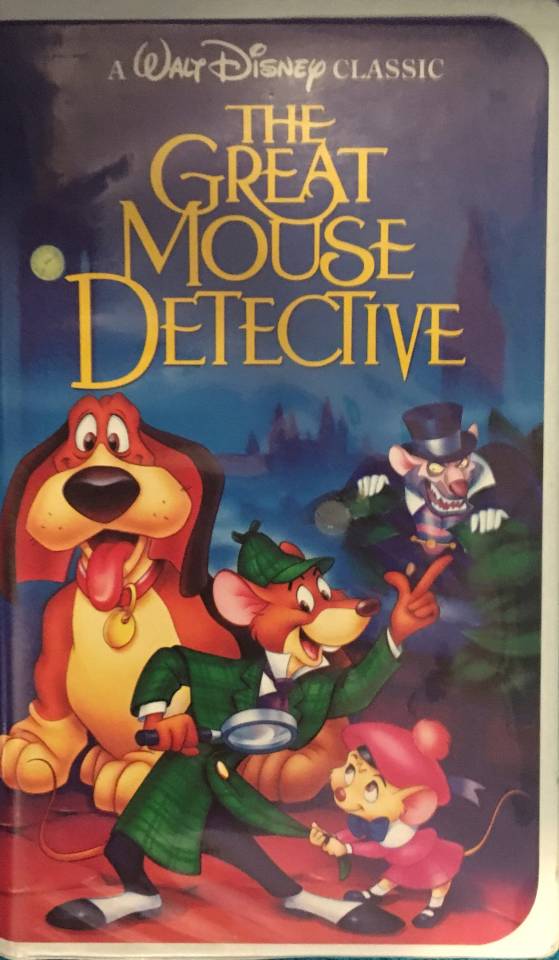
The Great Mouse Detective (1986) is a charming animated film that cleverly adapts Arthur Conan Doyle's detective stories into a mouse-sized world. The film features the clever and courageous Basil of Baker Street as he matches wits with the villainous Ratigan. The fun fact about it being beaten by "An American Tail" (1986) at the box office adds an interesting historical context. While "The Great Mouse Detective" might not have been the blockbuster success, it has gained appreciation for its clever storytelling and memorable characters, standing as a hidden gem in Disney's animation history.
#1986#the great mouse detective#barrie ingham#Val bettin#Vincent price#candy candido#john musker#Ron Clements#alan young
8 notes
·
View notes
Photo
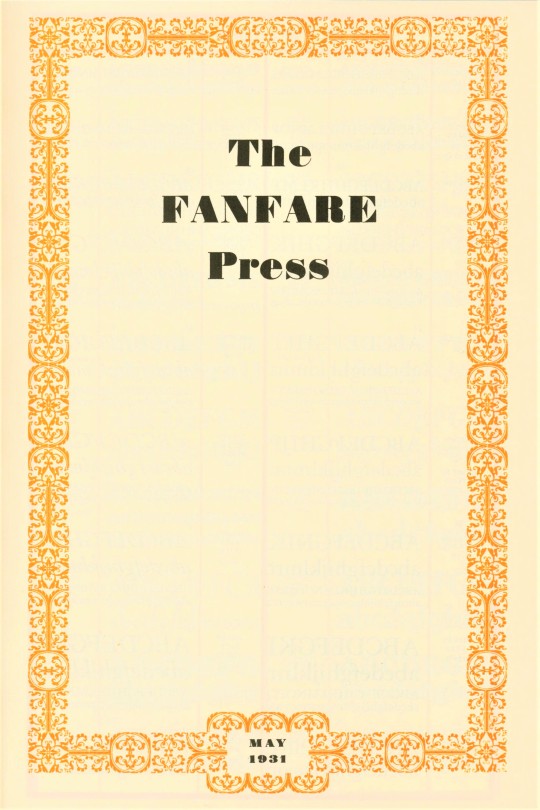


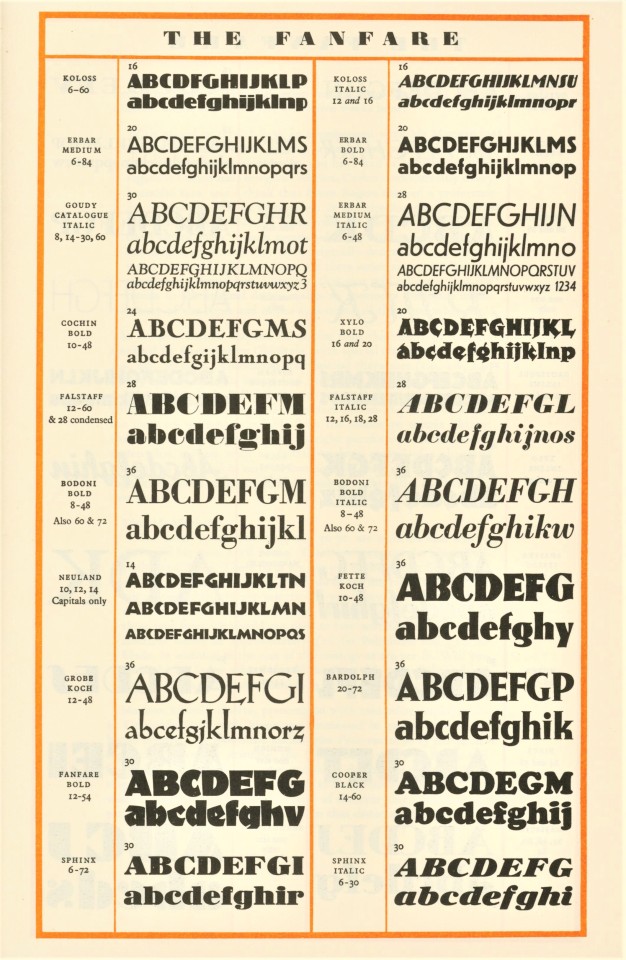
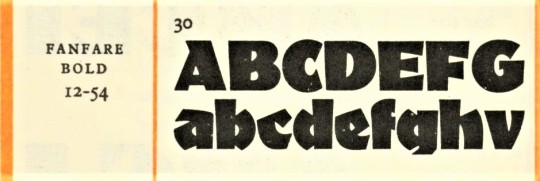
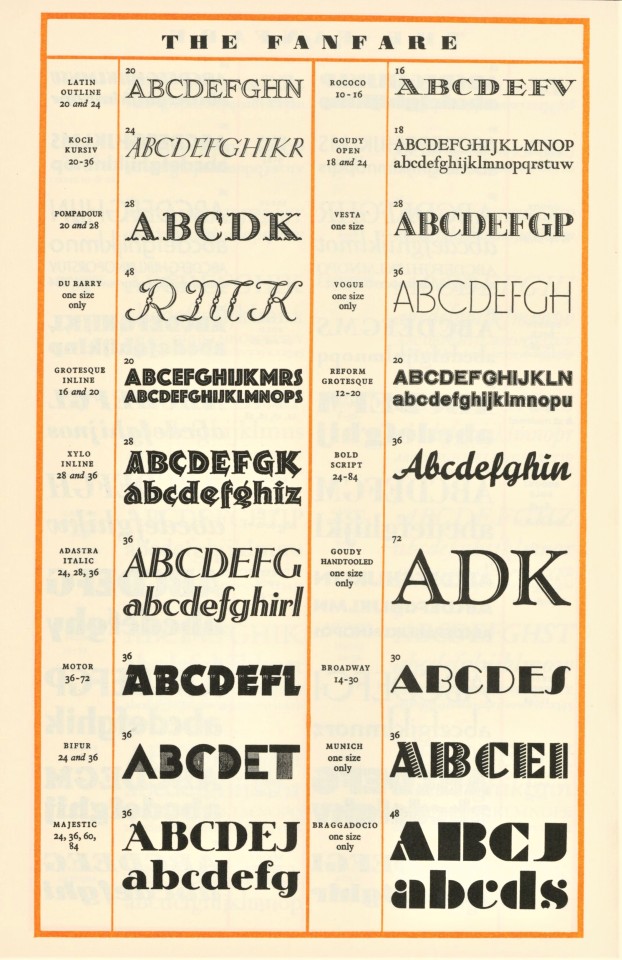

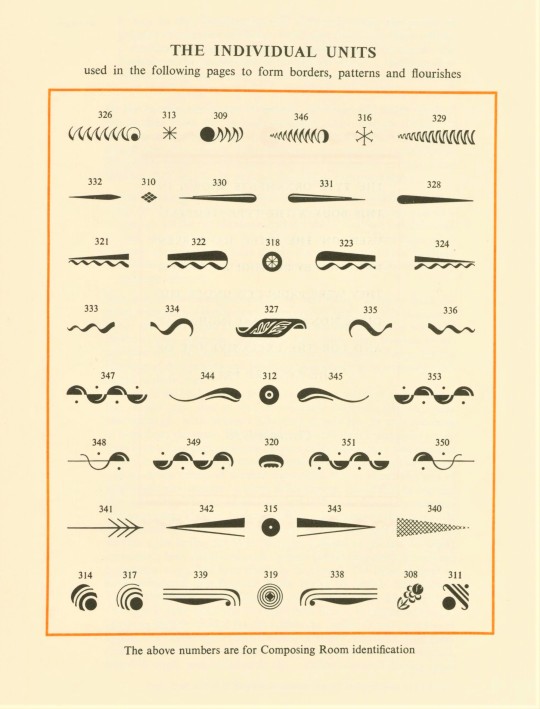


Typography Tuesday
We made two posts in the past week on a publication printed for Nonesuch Press by the Fanfare Press in London. Not much useful information about the press can be found on the interwebs, but there is an article about the Fanfare Press by former Trinity College, Cambridge, librarian David McKitterick published in Matrix 18, Winter 1998. pp. 24-43, that not only discusses the press but also displays the types and ornaments used by the press (shown above).
Fanfare was founded in 1925 by the flamboyant advertising publisher Charles William Hobson, but it was more closely associated with its managing director Ernest Ingham, who developed a reputation for impeccable design and printing and forged close working relationships with important type designers of the day, especially Eric Gill and Stanley Morison. The press “was designed on a deliberately modest scale: for setting publicity and advertising copy, employing an increasingly diverse range of typefaces,” but it soon became much more than that. Two of the firm’s major clients during the 20th century were the Nonesuch Press in England and the Limited Editions Club in America.
Shown above are the 1931 Fanfare Press type specimen and a 1938 display of type ornaments designed for the press by noted German type designer Berthold Wolpe.
Matrix 18 was printed in an edition of 825 copies by John and Rosalind Randle at the Whittington Press in England, and is a donation from our friend Jerry Buff.
View more posts from Matrix.
View other posts relating to the Whittington Press.
View more Typography Tuesday posts.
#Typography Tuesday#typetuesday#Fanfare Press#Ernest Ingham#David McKitterick#Matrix#Matrix 18#Charles William Hobson#Berthold Wolpe#type ornaments#type specimens#John and Rosalind Randle#Whittington Press#Typography Tuesday#Jerry Buff
45 notes
·
View notes
Text
Basil l'investigatopo
Basil l’investigatopo
Benvenuti o bentornati sul nostro blog. Nello scorso articolo abbiamo continuato il nostro viaggio nel cinema dell’orrore, riprendendo il discorso sul grande John Carpenter e parlando di una delle sue opere migliori, Il seme della follia. La storia di un investigatore assicurativo ingaggiato da una casa editrice per trovare uno degli scrittori dell’orrore più famosi di sempre, scomparso ormai da…

View On WordPress
#Alan Young#Animation#animazione#Barrie Ingham#Basil di Baker Street#Basil l&039;investigatopo#Basil Rathbone#Bruce Morris#Candy Candido#Conan Doyle#David Michener#David Q. Topson#Eve Titus#film#film d&039;animazione#Hiram Flaversham#Joe Hale#John Musker#Londra#Matthew O&039; Callaghan#Melvin Shaw#Moriarty#movies#Murny Mattinson#Olivia Flaversham#Peter Young#Professor Rattigan#Recensione#Recensione film#Ron Clements
3 notes
·
View notes
Text
SPIRITUAL ACCOMPANIMENT: A PERSONAL VISION.
Water, water everywhere and not a drop to drink
Introduction
Water is needed by humans, animals, and plant life. This has been apparent in the last month as the grass changed from lush green to straw in colour and spirit in the summer heat. Water is needed to grow and when there is no water there is no growth. The purpose of a Spiritual Accompaniment Process is to grow in the presence of rivers…

View On WordPress
#Christophe Lebreton#Dan B. allender#Gibbon Bogatsu#John 7:37-39#Joseph Luft and Harry Ingham#L&039;Engle#Madeleine L&039;Engle#Psalm 46:10#Scott Allender#Spiritual accompaniment#Spiritual direction#Walt Whitman
0 notes
Text
Partire è un po' morire? - II
John Dowland (1563 - 1626): Now, O Now I Needs Must Part, ayre (pubblicato nel First Booke of Songes or Ayres of foure partes with Tableture for the Lute, 1597, n. 6). Les Canards Chantants: Sarah Holland, soprano; Robin Bier, contralto; Edd Ingham, tenore; Graham Bier, basso. Con la collaborazione del liutista Jacob Heringman, che all’inizio e alla fine [5:00] esegue la Frog Galliard di Dowland,…
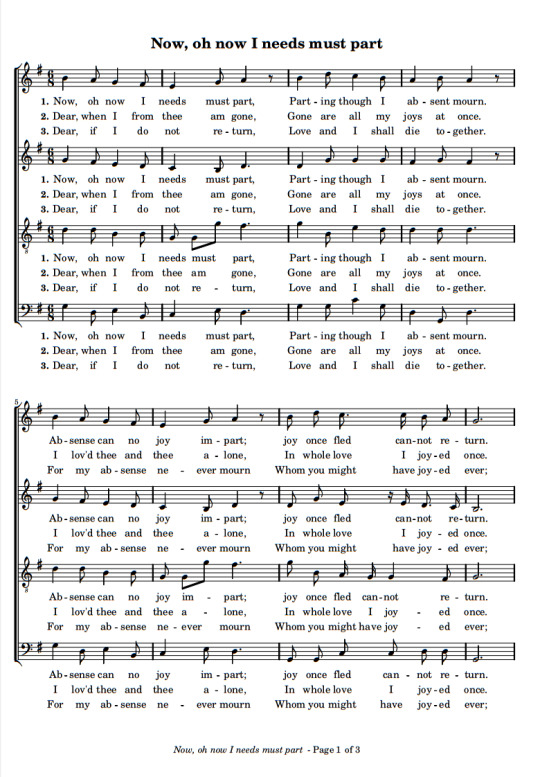
View On WordPress
0 notes
Text
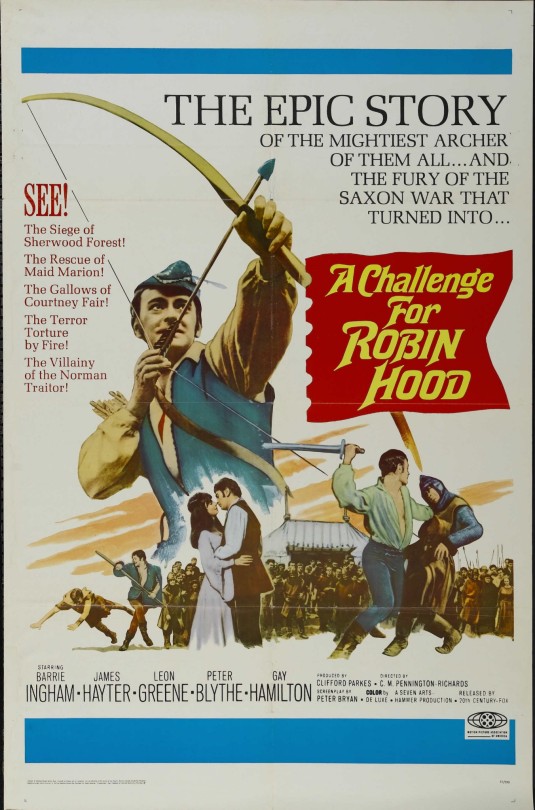


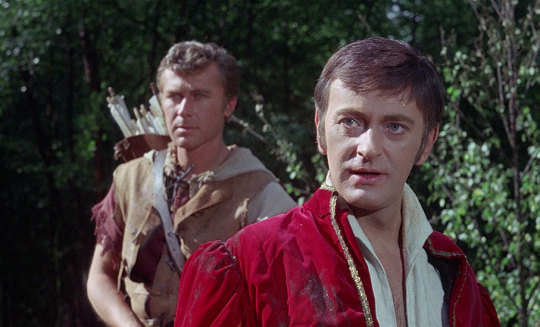
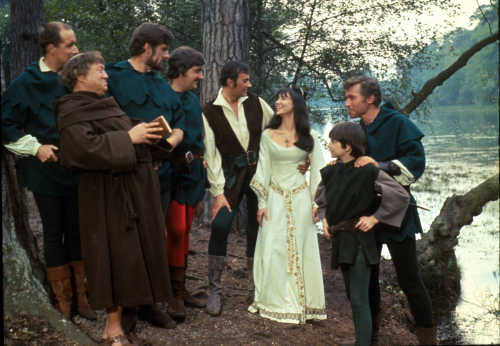
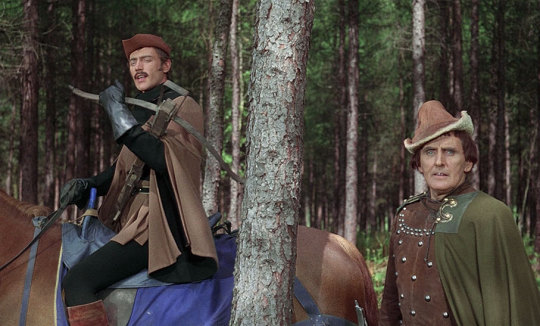



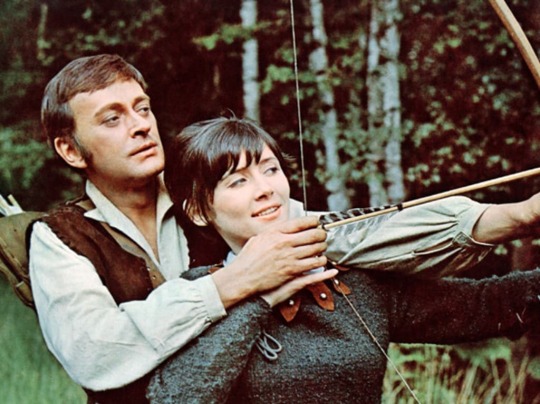
A Challenge for Robin Hood (1967)
"I love to see men wrestle."
"And after this, a hanging. There's no end to the entertainment."
#a challenge for robin hood#hammer films#1967#robin hood#british cinema#c. m. pennington richards#peter bryan#barrie ingham#james hayter#leon greene#peter blythe#gay hamilton#alfie bass#jenny till#john arnatt#eric flynn#john gugolka#john harvey#william squire#donald pickering#reg lye#a rollicking good time! pleasantly surprised by just how much I enjoyed this; surely one of the best of Hammer's adventure films#benefits from a rich and detailed plotting which explores not just Robin's background and noble heritage‚ but the larger Saxon and Norman#conflict and political landscape of the era. Ingham is a fine Robin (if difficult to accept as a hero; he played snobby assholes too often#in his tv guest spots) and Gay Hamilton is badly served by a script which renders Marian as little more than an object to be fought over#and rescued again and again‚ but the supporting cast of telly faces is immaculate. Arnett is a superbly snakelike Nottingham‚ all quiet#menace and unsettling looks‚ while dreamy Peter Blythe (sigh) is a perfectly spiteful and bitchy main villain. Eric Flynn (father of Jerome#and bros) is an earthy and likeable Alan a Dale (and was soon to play the lead in the BBC's excellent 1970 adaptation of Ivanhoe‚ meeting#another Robin Hood) while Leon Greene (who Hammer seem to have been considering for romantic lead status; he also did The Devil Rides Out#for them) is an amusingly blithe Little John. spectacular swordfights and a few moments of shocking violence: pure Hammer adventure fun
1 note
·
View note
Text
47 years ago today
Viv Albertine, Steve Severin, Kenny Morris, Sarah Hall and Siouxsie Sioux before and during the Sex Pistols concert, Notre Dame de France, November 15, 1976
Photos by John Ingham


#punk #punks #punkrock #sexpistols #history #punkrockhistory #otd
87 notes
·
View notes
Text
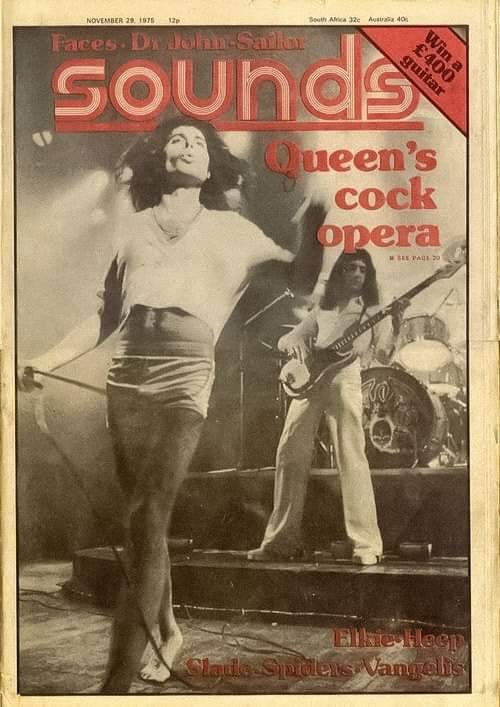
Today, November 18th, 1975 - Queen Story!
Bristol, UK, Colston Hall (two night)
'A Night At The Opera Tour'
This article chronicles the second show in Bristol.
🔸Sounds, November 29, 1975
Queen triumphant
Report by Jonh Ingham, pictures by Kate Simon
QUEEN ARE the type of group that make a man want to abandon rock writing. They pose questions and never provide answers. They exist in their own space-time continuum, visible and audible but keeping their secrets to themselves.
On the surface they couldn't be a nicer bunch of people, but they carry English reticence to an epitome. It isn't, as Geoff Barton said two weeks ago, that they're boring, it's just that they're reserved. Or in writer parlance, they don't automatically provide colourful copy. All my instincts as a writer tell me that there is a great story in that band, but after two nights with them I'm hardly any the wiser.
Skin tight
That their insularity has a lot to do with them being one of the most amazing heavy-metal and/or rock bands in Britain - with all the signs that they'll end up monsters on the order of Zep - is fairly obvious, but just how much bearing it has on the matter is hard to say. The enigmas they might pose mightn't even have answers.
Is there any logical reason why they present an image and persona straight out of the Beatles school of interlocking chemistry?
John is reserved, almost nonchalant on stage, as if it's all in a small, personal joke. When asked how he saw himself within the framework of the band he replied, with a small smile, "I'm the bassist".
Roger is his opposite, the cheeky sidekick in a Clint Eastwood movie, and attracting a lot of cheesecake attention in America and Japan.
Freddie is an original - one of the most dynamic singers to tread the boards in quite a few years. His attraction is obvious.
Brian is perhaps the biggest enigma of all. What is this seemingly frail, gaunt astronomer doing on that stage, striding purposefully and blasting diamond-hard rock? They're all equally strong personalities - like the Beatles there's no one major focal point. Ask four fans who their dream Queen is and you'll get four different answers.
Queen have been busy lads these past few months. Having disassociated themselves from their former management and joined with John Reid, the fourth album was seen to. Reid decided that a tight schedule wouldn't cause them undue harm, and figured on two months to record before embarking on this current tour.
Only Queen are driven to better each previous album - which at this stage of the game is obviously producing some excellent results - and 'A Night At The Opera' turned into a saga - culminating in 36-hour mixing sessions in an effort to allow at least a few days for rehearsal. In the end they managed three and a half days at Elstree with four hours off to videotape the promotional film for 'Bohemian Rhapsody'.
Their first few dates had not been without errors and the quartet were still not feeling totally comfortable their second night in Bristol, fourth night of the tour. You'd never know it, though.
Like all other aspects of the group, the stage is sophisticated. A black scrim provides a backdrop bounded by a proscenium of lights both front and rear. At each side the p.a. rises like a mutant marriage of Mammon and Robby the Robot. Amp power is readily evident but the most extraordinary is Brian May's subtle set up: nine Vox boxes stepping back in rows of three. The only packing crate visible is holding a tray of drinks, and you may rest assured that no roadie will rush, crawl or lurk across the stage while the show is in progress unless it's to rescue Freddie's mike from the clawing crowd.
As the auditorium darkens the sound of an orchestra tuning up is heard over the p.a. The conductor taps his baton on the music stand and a slightly effete voice welcomes the audience to A Night At The Opera. The Gilbert & Sullivan portion of 'Bohemian Rhapsody' follows, a brief glimpse of Freddie is allowed, and then in a blast of flares and white smoke the blitzkrieg begins.
Roger is barely visible behind his kit, just his eyes and tousled locks. John is wearing a white suit and playing the-man-who-must-stand-still-or-it-will-all-blow-away. Brian is slightly medieval in his green and white Zandra Rhodes top, while Freddie is...
Around his ankles his satin white pants flare like wings - fleet footed Hermes. Everything north of the knee is skin tight - tighter than skin tight - with a zip-up front open to AA rating. But further south, definitely in X territory, lurks a bulge not unlike the Sunday Telegraph.
There have been sex objects and sex bombs, superstar potency and the arrogant presentation of this all-important area, but never has a man's weaponry been so flagrantly showcased. Fred could jump up on the drum stand and shake his cute arse, leap about and perform all manner of amazing acrobatics, but there it was, this rope in repose, barely leashed tumescence, the Queen's sceptre. Oh to be that hot costume, writhing across the mighty Fred!
Phallic
Freddie is not pretty in the conventional sense of the word; like Mick Jagger of '64, he is his own convention. Also like the Jagger of the time, his stage persona and action is unlike anything else. Although it borrows - like most of the group's plagiarisms - slightly from Zeppelin, in tandem with Freddie's supreme assurance and belief in himself - he always refers to himself as a star - it explodes into something that is a constant delight to watch.
He reacts to his audience almost like an over-emotional actress - Gloria Swanson, say, or perhaps Holly Woodlawn playing Bette Davis. At the climax of the second night in Bristol he paused at the top of the drum stand, looked back over the crowd and with complete, heartfelt emotion placed his delicate fingers to lips and blew a kiss. Any person who can consume themselves so completely in such a clichéd showbiz contrivance deserves to be called a star.
Freddie's real talent, though, is with his mike stand. No Rod Stewart mike stand callisthenics here, just a shortee stick that doubles as a cock, machine gun, ambiguous phallic symbol, and for a fleeting moment an imaginary guitar. He has a neat trick of standing quite still in particularly frantic moments and holding the stand vertically from his crotch up, draw a fragile finger along its length, ever closer to the taunting eyes that survey his audience.
Their show contains lots of bombs and smoke, lots of lights, lots of noise. They fulfil the function of supremely good heavy metal - i.e. you don't get a second to think about what's going on. When they do let up for a few minutes, it's only so you can focus in on the bright blue electric charge crackling between your ears.
Bulldozer
Dominating the sound is Roger's drumming, a bulldozer echo that bounces like an elastic membrane, meshing with your solar plexus so that your body pulses in synch with the thunder. Tuned into that, everything else is just supremely nice icing.
For three days rehearsal, after eight months off the road Bristol was extremely impressive. In speculative mood I quizzed people on how long they thought it would take to headline Madison Square Garden. I was thought a radical at a year and a half. John Reid smilingly assured me it would take a year.
That Queen should end up with John Reid is an entirely logical proceeding. Everything about Queen demands that the world eventually kowtows at their feet in complete acquiescence - so big that bodyguards have to accompany them at every step. Well, no - they found that an annoyance in Japan, but, you know, huge.
Such status demands a Reid or a Peter Grant, and whatever the causes for their leaving Jack Nelson and Trident, an elegant group like Queen is going to look for a man with class. Reid found the idea of managing a group interesting, and having to deal with four strong personalities a challenge. He only concerns himself with their business and ensuring that the year ahead is mapped out. In January they begin a jaunt through the Orient, Australia and America, by which time it's March and they begin preparations for the next album.
Reid's prediction of a year was proven highly credible the next evening in Cardiff. The band had still not paused from the rush up to the tour and spent most of the day relaxing and sleeping - no doubt a factor in their near recumbent profile. Also, unlike most groups, they were keeping their dissatisfaction with the show to themselves.
They stopped off at Harlech TV on the way to see a cassette of the video for 'Bohemian Rhapsody'. The general consensus was quite good for four hours, with much laughter during the operetta. Brian finds film of the group educational - the first time he saw himself was a Mike Mansfield opus for 'Keep Yourself Alive' - "It was 'All right fellows, give it everything you've got but don't move off that spot.' It was terrible." You don't like Mansfield, eh? "Oh, I hate him - we all do... I was horrified when I saw it - I couldn't believe we looked that bad. I looked very static - seeing myself has taught me a lot about stage movement. Some of the things I do are planned for effect, but it's mostly just feeling the audience and communicating that back to them."
Arriving at the motel - several miles out of town - Freddie immediately fell asleep, John held court of a sort, joined later by Brian, while Roger went jogging, a daily event when touring. Tuning in to rock via Bill Haley and Tommy Steele, he became a drummer because he was better at it than guitar. All through school he was in bands; he only went to dental school out of "middle class conditioning, and it was a good way to stay in London without having to work". His mother thought it a bit strange when he opted for a career as a rock star, but she doesn't worry too much now.
The concert starts in much the same manner as the previous night, but there are signs that tonight is work, with posing an afterthought. The endings to most of their songs are magnificent and majestic, especially 'Flick Of The Wrist' and the rapid harmonies of 'Bad Boy Leroy Brown'
➡️ keep reading on http://jonh-ingham.blogspot.com/2007/02/queen-riot-at-opera.html?m=1
#freddie mercury#queen band#london#zanzibar#legend#queen#brian may#john deacon#freddiebulsara#roger taylor#1975#queen invite you to a night at the opera#a night at tbe opera album#a night at the opera tour#bristol
66 notes
·
View notes
Photo


The Damned live at the Hope & Anchor in Islington, London, January 1st 1977 by John Ingham
143 notes
·
View notes
Text
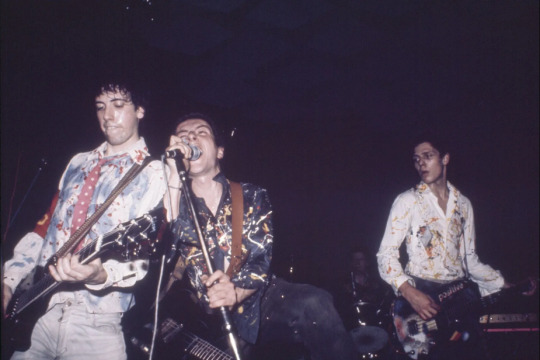

The Clash , “A Night of Treason” , Royal College of Art (RCA) , London , England , 5th November , 1976 .
©️ John Ingham
#mick jones#terry chimes#joe strummer#paul simonon#the clash#punk boy#punk aesthetic#70s punk#80s punk#uk punk#punk rock#new wave#post punk#experimental rock#reggae#dub#funk#ska#rockabilly#the only band that matters#a night of treason#photography#royal school of art#RCA#london#england#1976#john ingham
113 notes
·
View notes
Text


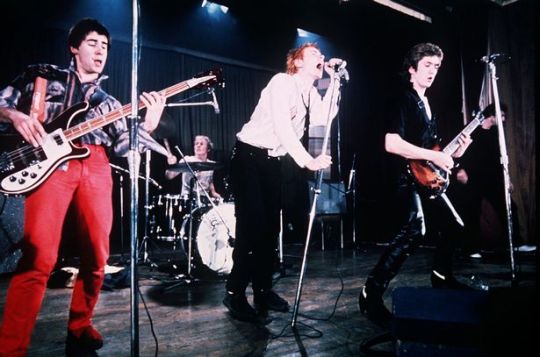

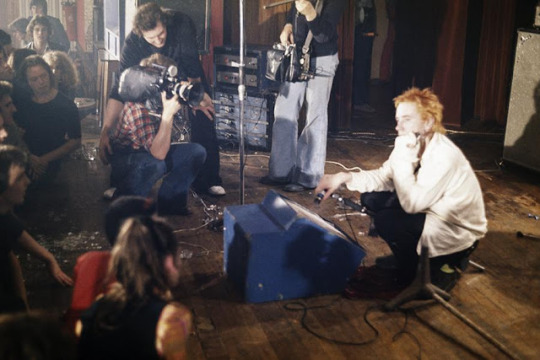


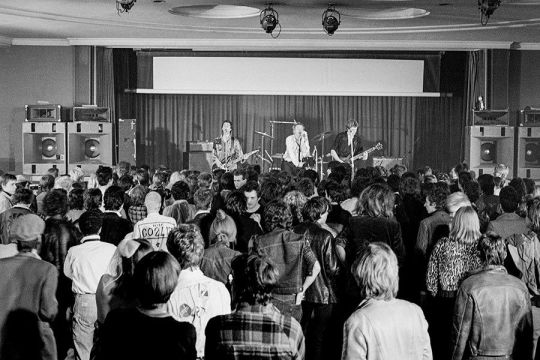
"THEY ARE LOUD. THEY ARE FAST. THEY ARE ENERGETIC. THEY ARE GREAT."
PIC(S) INFO: Spotlight on various shots of first wave UK punk rock band the SEX PISTOLS performing live at Notre Dame de France, London, England on November 15, 1976 for the TV programme "London Weekend." 📸: John Ingham.
BONUS PIC(S) INFO: The American horror film "The Texas Chainsaw Massacre" (1974) had just been released after several years of being banned for its extreme violence. The group had seen the film just before filming and wore "I Survived the Texas Chainsaw Massacre" stickers.
JOHN INGHAM: "Flared jeans were out. Leather helped. All black was better. Folks in their late twenties, chopped and channelled teenagers, people who frequent SEX, King's Road avant leather, rubber and bondage clothing shop. People sick of nostalgia. People wanting forward motion. People wanting rock and roll that is relevant to 1976.
At the moment, that criteria is best embodied in the Sex Pistols. They fill the miniscule, mirror-backed stage, barely able to move in front of their amps. They are loud. They are fast. They are energetic. They are great."
-- JOHN INGHAM-MY BACK PAGES, "The Sex Pistols First Inteview," from "Sounds," c. April 1976
Sources: The Guardian, My Back Pages, Song Smiths, Dazed Digital, Flashbak, & http://jonh-ingham.blogspot.com/2008/04/sex-pistols-first-interview.html.
#SEX PISTOLS#THE PISTOLS#PISTOLS#First Wave UK punk#Super Seventies#Punk photography#London#London UK#The Texas Chainsaw Massacre#70s punk#The Texas Chainsaw Massacre 1974#1970s#Johnny Rotten#Steve Jones#John Ingham photography#Punk gigs#1976#1976 punk#Punk#Punk rock#UK punk#John Ingham#Glen Matlock#Paul Cook
1 note
·
View note
Text
THIS DAY IN GAY HISTORY
based on: The White Crane Institute's 'Gay Wisdom', Gay Birthdays, Gay For Today, Famous GLBT, glbt-Gay Encylopedia, Today in Gay History, Wikipedia, and more … December 27


c.15 AD – John the Evangelist. The Gospel of John makes several references to "the disciple Jesus loved", and to "the Beloved Disciple", including references to special priviliges that Jesus gave to this relationship, not granted to other disciples. This is taken by some Biblical scholars as evidence that Jesus had a relationship with this disciple which was at least emotionally intimate, and possibly sexual. In medieval Northern Europe, there was even a long-standing tradition that he and Christ were the bridal couple at the Cana Wedding Feast.
It is not clear whether this "Beloved Disciple" was John himself (although it could have been), or someone else possibly Lazarus.
In any event, there are suggestions from elsewhere that John may have had a same-sex relationship with another, his scribe Prochorus, after Christ's death. Prochorus later became bishop of Nicomedia, and in turn, formed a fresh relationship of his own with a younger man, Irenaeus.

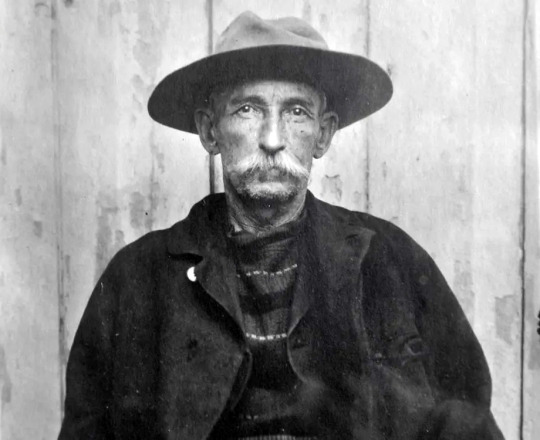
1846 – Ezra Allen Miner, more popularly known as Bill Miner, was an American bandit, originally from Bowling Green, Kentucky, who served several prison terms for stagecoach robbery (d.1913). Known for his unusual politeness while committing robberies, he was widely nicknamed the Grey Fox, Gentleman Robber or the Gentleman Bandit. He is reputed to have been the originator of the phrase "Hands up!" Legend has it that Bill Miner admonished his cohorts to fire their guns when in danger of capture but "do not kill a man".
Miner was born Ezra Allen Miner in Vevay Township, near Onondaga, Ingham County, Michigan. He never legally changed his first name, but regarded William Allen Miner as his true name throughout most of his life. He was arrested for the first time in 1866 in San Joaquin County, California and served time there. He then formed a partnership with Bill Leroy to rob a stagecoach. Leroy was caught and lynched, but Miner escaped. He was later caught for another robbery in Tuolumne County, California and was released from San Quentin in 1901.
After his third prison term, Miner moved to British Columbia in Canada, where he adopted the pseudonym George Edwards and is believed to have staged British Columbia's first-ever train robbery on September 10, 1904 at Silverdale about 35 kilometres (22 mi) east of Vancouver, just west of Mission City.
Miner was eventually caught after a botched payroll train robbery near Kamloops at Monte Creek (then known as "Ducks"). Choosing the wrong car, they managed only to rob $15 plus a bottle of kidney pills that Miner picked up off of a shelf. Miner and his two accomplices, Tom "Shorty" Dunn and Louis Colquhoun, were located near Douglas Lake, British Columbia after an extensive manhunt. A posse surrounded them while they were lunching in the woods. Miner presented himself as George Edwards and claimed that he and his cohorts were prospectors. The officer in charge of the posse suspected he had encountered the nefarious train-robbing gang and challenged the claim, putting them under arrest.
Dunn attempted to fire at the police and was shot in the leg. He gave up quickly after being wounded. Colquhoun was disarmed by an officer standing nearby and Miner never drew his weapon. Miner's arrest and subsequent trial in Kamloops caused a media spectacle. Apparently the most damning evidence against him was the bottle of kidney pills that Miner had picked up during the Ducks robbery. Upon his conviction, he, Dunn and Colquhoun were transported by train to the provincial penitentiary in New Westminster. By that time, Miner's celebrity status had risen to the point that the tracks were reputedly lined with throngs of supporters, many of whom expressed satisfaction with the fact that someone had taken the very unpopular CPR to task.
While serving time in the B.C. Penitentiary, Miner escaped in 1907 and was never recaptured in Canada. He moved back to the United States, becoming once again involved in robberies in the South at Gainesville in 1909. There, he served more prison time, and escaped twice.
He died in the prison farm at Milledgeville, Georgia, of gastritis, contracted from drinking brackish water during his previous escape attempt.Researchers Mark Dugan and and John Boessenecker contend that Miner was the only known homosexual outlaw in the American "Wild West." In his younger days, "Miner, who had a slender, girlish figure, no doubt was a target for sex-starved older and stronger convicts." Later, they claim, he lured young men into crime and preyed on them sexually. Whatever Miner's sexual preference, the only evidence of Miner's homosexuality surfaced in 1903 when the Pinkerton Detective Agency stated that Miner "is said to be a sodomist and may have a boy with him."


1932 – On this date Fritz "Fred" Klein the Austrian-born American sex researcher, psychiatrist and pioneering Bisexual rights activist was born (d.2006). He's best known as the inventor of the Klein Sexual Orientation Grid. He was also a pioneering bisexual rights activist, who was an important figure in the modern LGBT rights movement.
As a self-identified bisexual, Klein was surprised at the lack of literature on his sexuality in the New York Public Library in 1974. He was inspired to place an advertisement in a New York City alternative newspaper the Village Voice and founded a ground-breaking social and support group for the Bisexual Community called Bisexual Forum.
He devised the Klein Sexual Orientation Grid, a multi-dimensional system for describing complex sexual orientation, similar to the "zero-to-six" scale Kinsey scale used by Alfred Kinsey, but measuring seven different vectors of sexual orientation and identity (sexual attractions, sexual behavior, sexual fantasies, emotional preference, social preference, lifestyle and self-identification) separately, as they relate person's past, present and ideal future.
Klein published The Bisexual Option: A Concept of One Hundred Percent Intimacy in 1978, based on his research, the world's first real psychological study of bisexuality. He also co-authored Man, His Body, His Sex in 1978, and published Bisexualities: Theory and Research in 1986 and Bisexual and Gay Husbands: Their Stories, Their Words in 2001. He published a novel, Life, Sex and the Pursuit of Happiness in 2005.


1973 – Wilson Cruz (born Wilson Echevarría) is an American actor known for playing Rickie Vasquez on My So-Called Life and the recurring characters of Junito on Noah's Arcand Dr. Hugh Culber on Star Trek: Discovery. As an openly gay person of Puerto Rican ancestry, he has served as an advocate for gay youth, especially gay youth of color.
Wilson Cruz was born in Brooklyn, New York to parents of Puerto Rican descent. His family eventually moved to Rialto, California where he attended Eisenhower High School, graduating in 1991. At age 19, Cruz came out to his parents as gay, first to his mother and then his father. While his mother was initially hurt and shocked, she eventually accepted the news. His father, however, threw him out of the house, and Cruz spent the next few months living in his car and at the homes of friends. He later reconciled with his father.
After coming out to his parents, Cruz went to Hollywood to seek work as an actor, intending to be open about his sexuality from the beginning of his career. In 1994 he was cast as Enrique "Rickie" Vasquez, a troubled gay teen, in the short-lived critically acclaimed cult classic TV series My So-Called Life. In one episode (entitled "So-Called Angels") drawn from Cruz's own life, Rickie comes out to his family, who throw him out of the house.
Cruz works with and advocates on behalf of LGBT youth, especially youth of color. He has volunteered his time as host for the Youth Zone, an online community at Gay.com for LGBT youth. He was the Grand Marshal of the 1998 West Hollywood Gay Pride parade and the 2005 Chicago Pride Parade. In 2008, he was the keynote speaker at the University of Illinois at Chicago's Lavender Graduation and Rainbow Banquet honoring graduating LGBT students.
Cruz joined the board of directors of GLAAD in 1997 in order to assist the organization through a leadership transition, and joined the staff of GLAAD in 2012 as a National Spokesperson and Strategic Giving Officer.

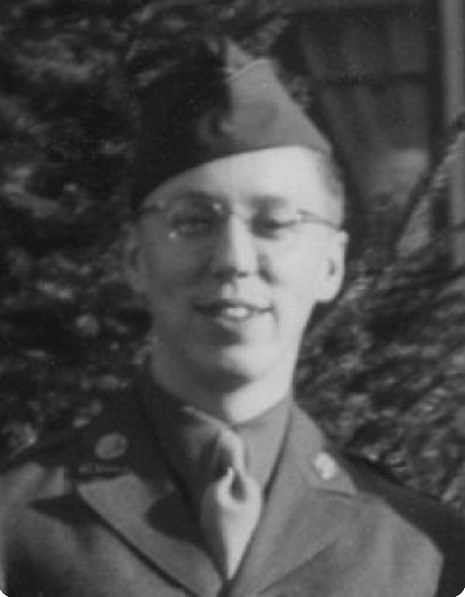
Rowland in his army days
1990 – Died: Chuck Rowland (b.1917) was a founding member of the Mattachine Society. He was active with ONE Inc. and founded the short-lived Church of One Brotherhood. Upon retiring from twenty years of teaching in 1982, Rowland founded Celebration Theatre in Los Angeles.
Chuck Rowland was born and grew up in tiny Gary, South Dakota. He recognized he was homosexual at an early age, and after reading a sympathetic series of articles in a pulp magazine, concluded that, if millions like him existed, they could be mobilized. At the University of Minnesota in the late 1930s, he was active on campus in support of the loyalists of Spain and other causes. While in grad school during 1939–40 he returned to Gary as a substitute for the spring term. On a weekend visit to Minneapolis, he met Bob Hull, a U of M undergraduate. The two had a brief romance, lived together, and became lifelong friends.
In 1942, Rowland was drafted into the army. Due to a severe injury, he stayed stateside during the war. While enlisted, Rowland became a charter member of the American Veterans Committee, a liberal alternative to the American Legion. After discharge in March 1946, he showed his talent as an AVC organizer, but his active support for veterans’ bonus legislation, which the group disparaged as “handouts,” led to his being “canned” by the AVC by 1947.
While in the AVC, Rowland noted that those he knew to be communists were some of AVC’s best organizers. “I was just carried along with this feeling of liberalism and the horror of the [anti-communist] reaction that was setting in,” he said, “and my feeling was that we had to move farther and farther to the left, as a result of which I got into the Communist Party.” Rowland returned to Minneapolis and headed the CP’s Midwest youth division.* (His value as an organizer trumped any chance of being expelled under the party’s unwritten anti-gay policy.) Rowland recruited Hull into the party, and the two contemplated Rowland’s childhood dream of organizing homosexuals.
In 1948, he quit the CP and move to Los Angeles, followed by Hull. There, at a labor school, the two met a teacher, Harry Hay, who also had done some thinking about a homosexual organization.
Harry Hay was developing a blueprint for a homophile support group, but before he could show it to them, Rowland and Hull moved to Mexico in the summer of 1950, intending to relocate permanently to avoid anti-Communist witch-hunts. They returned by fall, however, and received Hay’s completed prospectus, which they eagerly shared with Hull’s new boyfriend, Dale Jennings. The three met with Hay and his lover Rudi Gernreich on Armistice Day 1950, and eventually formed the (necessarily) secretive Mattachine Society and its public nonprofit, Mattachine Foundation.
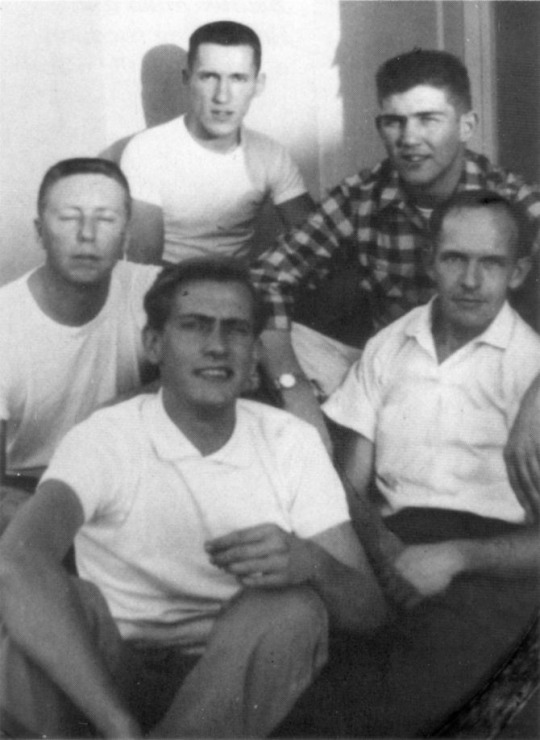
Mattachine members clockwise from top:
Chuck Rowland, Konrad Stevens,
unknown, Bob Hull, Jim Gruber
Rowland immersed himself in ONE Inc., writing for its magazine and directing its social services division. In 1954 he proposed that ONE open a guidance center staffed with gay counselors to mentor the waifs who found themselves alone in a new city. The project foundered, but Rowland nevertheless reported to ONE that in 1955 his division provided job placement and/or vocational counseling for nearly 100 people.
The early 60s saw Rowland involved in a possible FBI blacklisting (as both Red and gay), a failed business partnership, a dependence on intoxicants, mounting debt, and eviction. Finally, following the tragic suicide of his friend Bob Hull in May of 1962, Rowland returned to the Midwest. That summer he was hired as a credentialed high school teacher in Iowa. Obtaining his master’s degree in 1967, he chaired the theater arts department at a Minnesota college.
Upon retiring in 1982, Rowland returned to Los Angeles from his “exile,” as he put it, while admitting to “some worthy accomplishments” and meaningful relationships. In late 1982, with Jim Kepner and ex-Mattachino Martin Block, Rowland founded Celebration Theatre, billed as “the only theatre in Los Angeles dedicated exclusively to productions of gay and lesbian plays.” Kepner hosted its debut in the late spring of 1983, in his National Gay Archives.
Having been hospitalized in March 1090 with prostate cancer that proved to be terminal, Rowland “moved to Duluth where a former student fixed up a handsome apartment overlooking the lake,” according to a Kepner-penned obituary. “He spent five happy months among students and relatives….” Chuck Rowland died December 27, 1990.


9 notes
·
View notes
Text
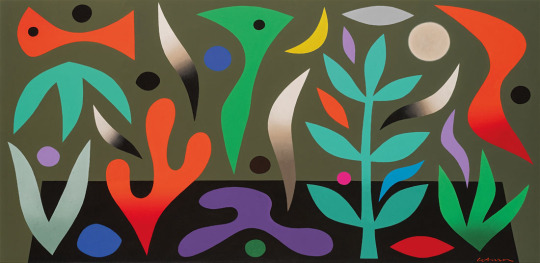





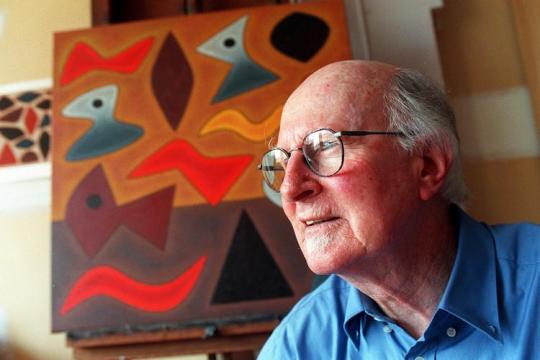
John Coburn (1925 – 2006) was an Australian abstract painter, teacher, tapestry designer and printmaker.
Born in Ingham, Queensland, John Coburn moved from town to town with his mother and two younger sisters when his bank manager father went from branch to branch. His father died when the boy was 10.
While enlisted in the Royal Australian Navy during World War II, Coburn travelled around the Pacific and Indian oceans as a radio operator. He drew images from these places whilst aboard HMAS Nepal, including Sri Lanka, Papua New Guinea and others.
11 notes
·
View notes
Photo


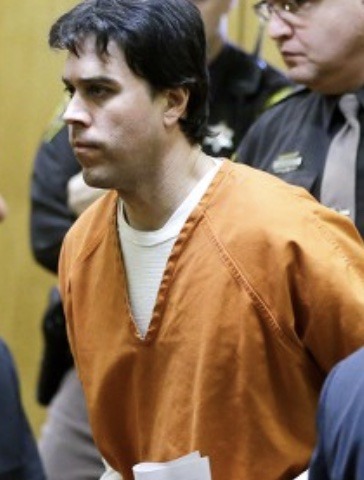
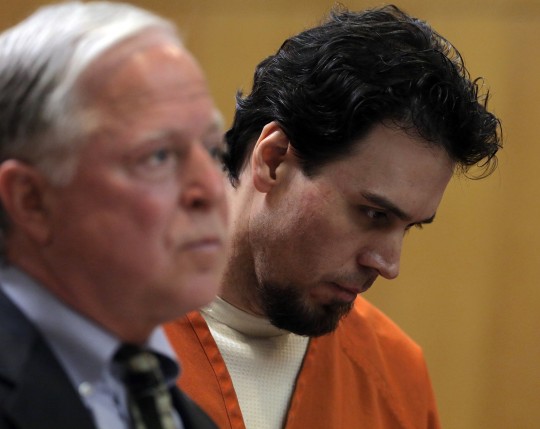




Post 850
Raulie Wayne Casteel, Michigan inmate 895859, born 1969, incarceration intake at age 44, scheduled for earliest possible release 11/05/2030, with full discharge on 11/05/2054
Assault with Great Bodily Harm other than Murder, Use of a Weapon in the Commission of a Felony, Terrorism
A man who kept a swath of southeastern Michigan on edge for weeks by shooting at two-dozen vehicles along a busy highway corridor was sentenced to 16-to-40 years in prison on a terrorism conviction.
Raulie Casteel, 44, learned his fate in Livingston County Circuit Court, where a jury found him guilty of terrorism, rejecting his claim that the shootings were the impulsive result of uncontrolled delusions and paranoia.
During the Livingston County trial, Casteel testified that he shot at the other motorists on Interstate 96 and nearby roads between Lansing and Detroit over a three-day period in October 2012. Testifying in his own defense, Casteel said he was consumed with anxiety while in traffic, most likely from undiagnosed delusions. He said he believed drivers were part of a government conspiracy against him.
Casteel said he never thought about the consequences of the shootings, only that he wanted "to send a message to back off."
Defense lawyers pleaded for an acquittal on the terrorism charge, arguing there was no premeditation as required by law, but the jury disagreed.
The terrorism charge brought by the state attorney general's office covered all the shootings in Livingston, Shiawassee, Ingham and Oakland counties. Casteel had faced 60 charges, including attempted murder, in Oakland County for shootings in Commerce Township and Wixom before pleading no contest but mentally ill to assault and firearms charges last year.
Casteel's lawyers and family members favored a plea deal, because it allows him to receive the mental health counseling he wants. Defense attorney Doug Mullkoff has said his client was diagnosed with delusional disorder, a condition associated with maintaining false, persistent beliefs despite evidence to the contrary.
Casteel is a St. Johns, Mich., native who lived in Taylorsville, Ky., before returning to Michigan in 2012 to live with his wife's family.
Police in Kentucky said they had no contact with him until June 2012 when he became agitated and complained about aircraft flying too low over his house. No one else had reported low-flying planes.
In 2020 he appealed to the Michigan Supreme Court to have his convictions quashed under the argument that he was not allowed to raise a proper insanity defense. The appeal was not successful.
3f
15 notes
·
View notes
Text




‘A Night At The Opera Tour’
John Reid's prediction of a highly successful year was proven highly credible the next evening in Cardiff. The band had still not paused from the rush up to the tour and spent most of the day relaxing and sleeping - no doubt a factor in their near recumbent profile. Also, unlike most groups, they were keeping their dissatisfaction with the show to themselves.
The band stopped off at Harlech TV on the way to see a cassette of the video for 'Bohemian Rhapsody'. The general consensus was quite good for four hours, with much laughter during the operetta. Brian finds film of the group educational - the first time he saw himself was a Mike Mansfield opus for 'Keep Yourself Alive' - "It was 'All right fellows, give it everything you've got but don't move off that spot.' It was terrible." You don't like Mansfield, eh? "Oh, I hate him - we all do... I was horrified when I saw it - I couldn't believe we looked that bad. I looked very static - seeing myself has taught me a lot about stage movement. Some of the things I do are planned for effect, but it's mostly just feeling the audience and communicating that back to them."
Arriving at the motel - several miles out of town - Freddie immediately fell asleep, John held court of a sort, joined later by Brian, while Roger went jogging, a daily event when touring. Tuning in to rock via Bill Haley and Tommy Steele, he became a drummer because he was better at it than guitar. All through school he was in bands; he only went to dental school out of "middle class conditioning, and it was a good way to stay in London without having to work". His mother thought it a bit strange when he opted for a career as a rock star, but she doesn't worry too much now.
The concert starts in much the same manner as the previous night, but there are signs that tonight is work, with posing an afterthought.
During ‘Stone Cold Crazy’ Freddie's movements explode in perfect unison with the music, the lights and surroundings go crazy, and the audience goes berserk.
Freddie asks for requests and receives a roar out of which one can vaguely make 'Liar'. Fred walks along the stage, nodding, agreeing he will do this one and that one while the kids roar on. "I'll tell you what - we'll do them all!"
(Brian twisted his ankle during ‘Liar’ unbeknownst to the audience.)
'Doing Alright' changes into a cha-cha beat, Freddie snapping his fingers, the coolest hipster in town, and then instantly drops into faster-than-light drive - the whole row next to me leaps to their feet as a man, rocking back and forth as Brian roars into a blinding solo.
Two songs later, in 'Seven Seas of Rye', the kids break - very fast - and in five seconds half the audience is a seething mass in front of the stage, climbing on each other in pyramids, sudden openings appearing as a splintering seat sends a few bodies to the floor.
(Seats seats were damaged from the fans climbing over them)
Interestingly, Freddie's strip act during ‘Big Spender’ isn't part of the show every night. On this night Freddie appeared (and remained) in his kimono, while on the previous night he emerged for the encore in his tight white shorts
Queen will probably always be remembered, because as their tour is beginning to demonstrate, they have the ability to actualise and encompass the outer limits of their sense of self-importance. Queen and their music, presentation, production - everything about them says that they are more important than any other band you've every heard, and who has there been, so far, who has objected? Certainly not the 150,000 people (plus 20,000 a day) who bought 'Bohemian Rhapsody' in the first 20 days of its release. Certainly not me.
Source: Queen: A Riot At The Opera
Published in Sounds, November 29 1975
Queen triumphant
Report by Jonh Ingham
2 notes
·
View notes